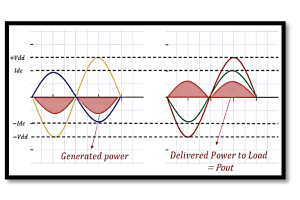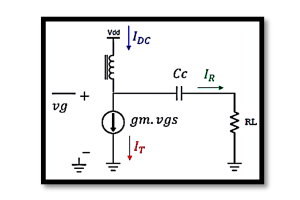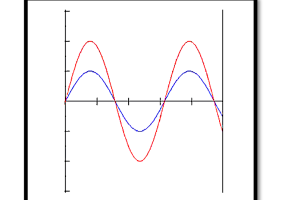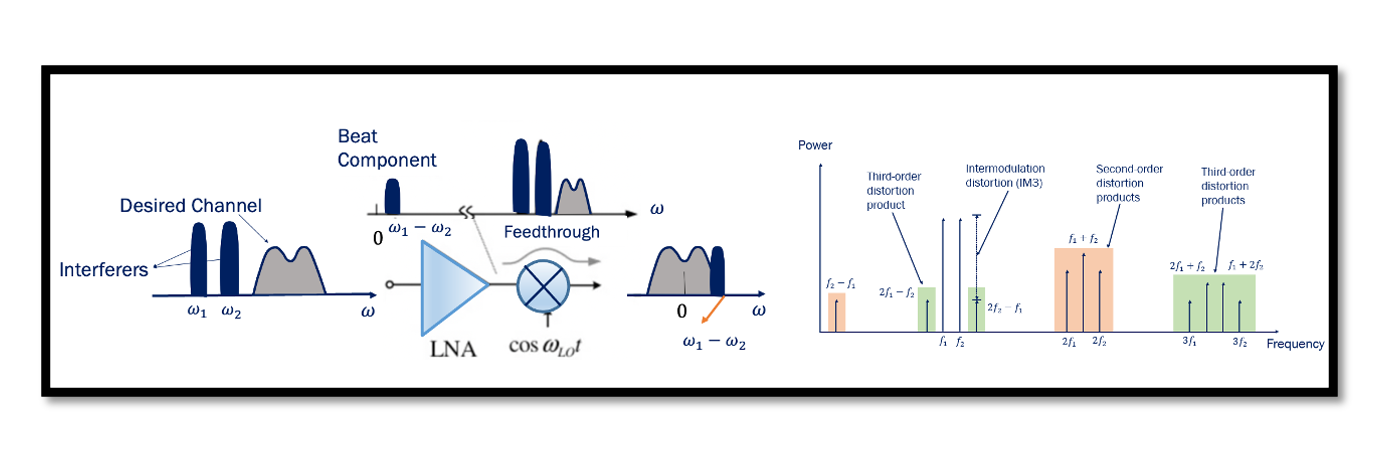
Drawbacks of Direct Conversion Receivers – Even Order Distortion
What are the drawbacks of Direct Conversion Receivers?
- DC offset is coming from local oscillator leakage. The local oscillator leakage problem causes a large DC offset in the baseband and saturates the baseband circuits. Read more.
- LO Leakage – Direct conversion receiver emits a fraction of its LO power from its antenna. Isolation is a measure of the leakage, or feedthrough, from one port to another. Read more.
- Flicker Noise – Flicker Noise is one of the types of noise that occurs in almost all electronic components and is inversely proportional to frequency. If the frequency increases, the flicker noise decreases. Read more.
- Even Order Distortion
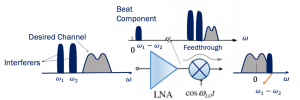
What is Even Order Distortion?
Another drawback of designing a direct conversion receiver is Even Order Distortion.Take an example as shown in the above diagram where we have two interferers and a non-linear LNA, so at the output of LNA we will get a component with a frequency of w1 – w2, this component is called the beat component. Interferers are two unwanted signals with high amplitude than the desired signal.
In the course ‘’RF Design Theory and Principles – RAHRF201’’ we discussed non-linearity and interferers Read here. The output for the non-linear system can be expressed as:
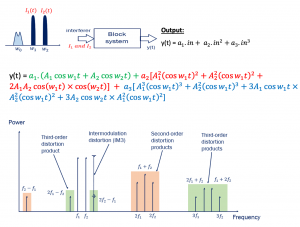
In this case, w1 and w2 are frequencies of interferes with amplitude A1 and A2, and if we have a non-linear system, we had a different kind of inputs. From this, we are interested in the third part of the second-order non-linearity which gives w1+w2, and w1 – w2.

Looking back into the example above, the inputs we have are w1 and w2 and at the output, we get the component which comes from the second-order non-linearity whose frequency is w1 – w2. As we know that w1 and w2 are close to each other and therefore the frequency w1 – w2 is a low value, meaning it will go the baseband side and hence would be close to the desired channel.
There is another path from port 1 to port 3 in the mixer through which it can come close to the desired channel. So this frequency w1 – w2 can pass through the feedthrough and it will appear directly at the output which can cause us the problem corrupting the channel as it’s very close to the baseband. So the question here is how to prevent this problem.
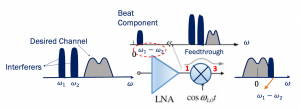
How to avoid Even Order Distortion?
For LNA – Use high IIP2 structures. For example, if you have to design an LNA and have a direct conversion receiver then design it in such a way that it has very low IIP2. Make it a differential LNA as we don’t have second-order non-linearity in a differential system.
For Mixer – Design it as a differential mixer and be careful about the layout as the Mixer layout should be symmetrical to avoid the feedthrough from ports. The feedthrough will cancel out at the output of the symmeterical mixer.
Points to note will be:
- High IIP2 structures (Implies that they should have differential structure)
- Differential mixer
- Design symmetrical Mixer layout


